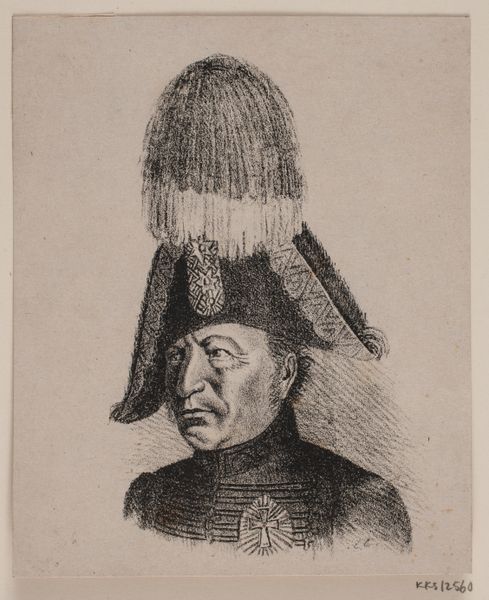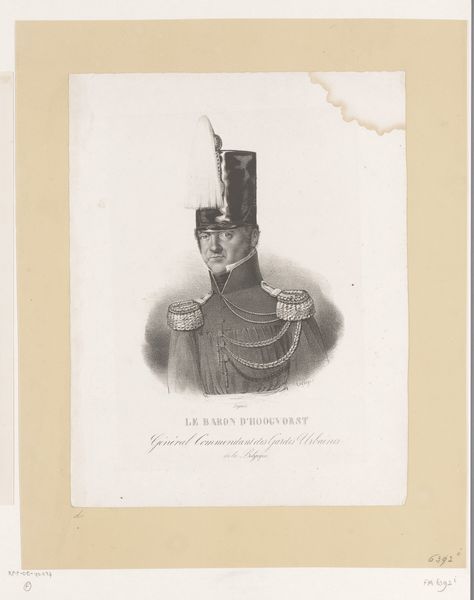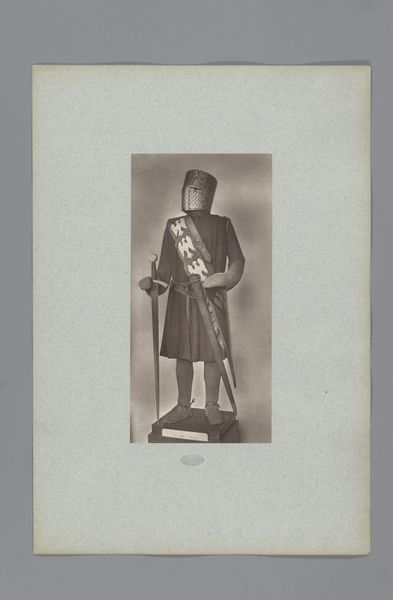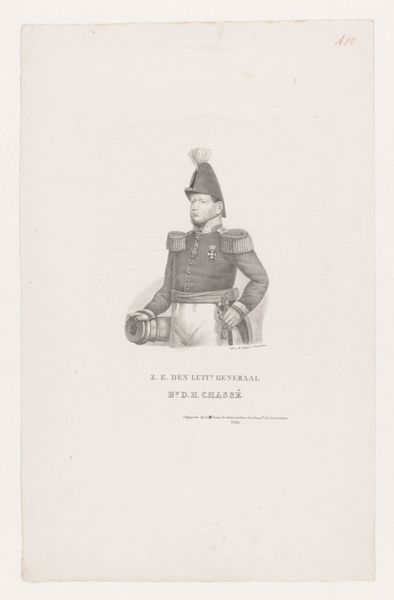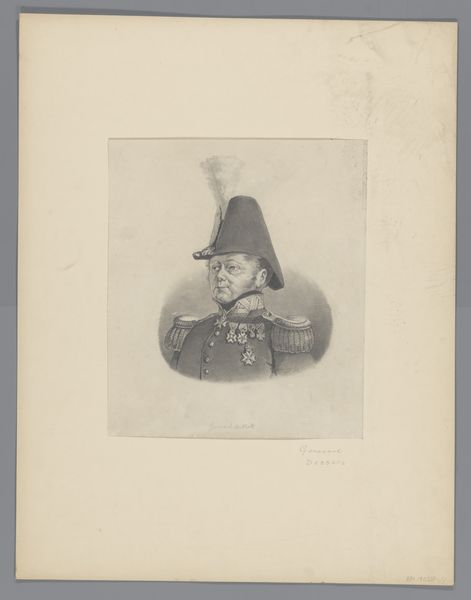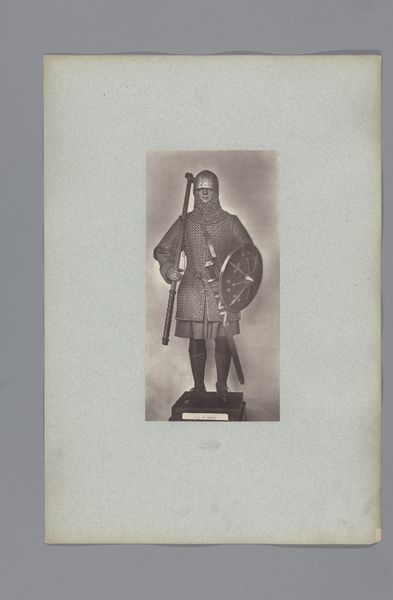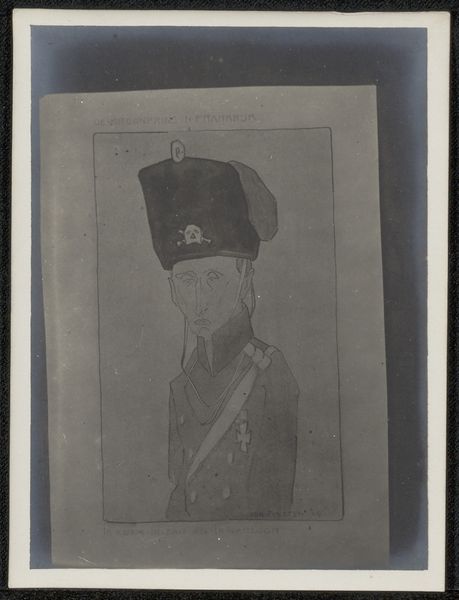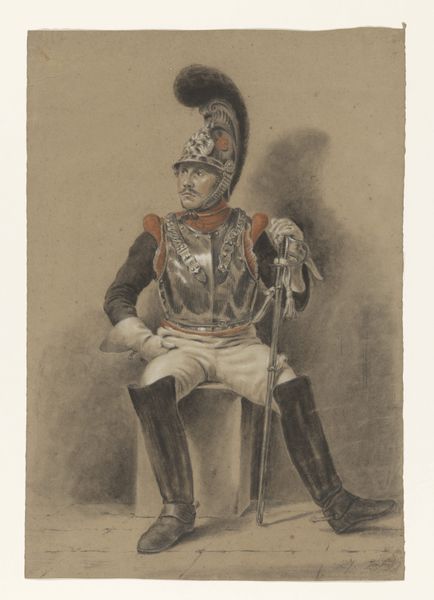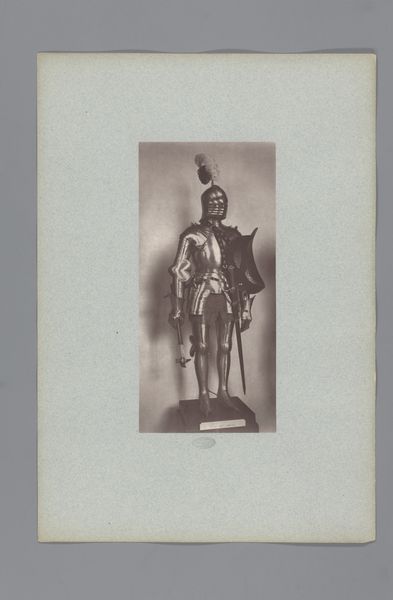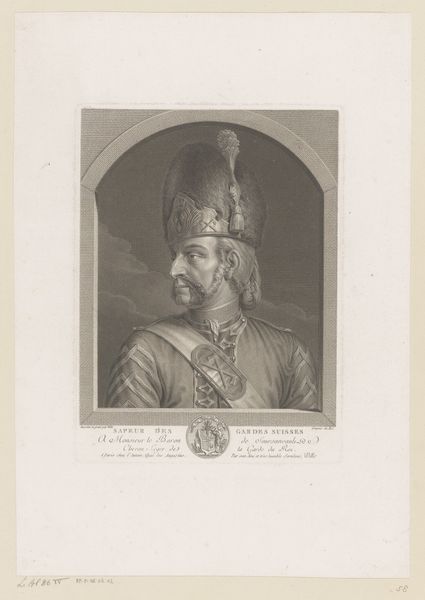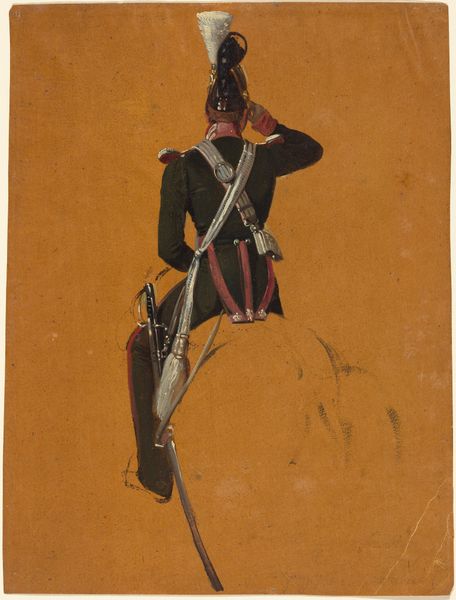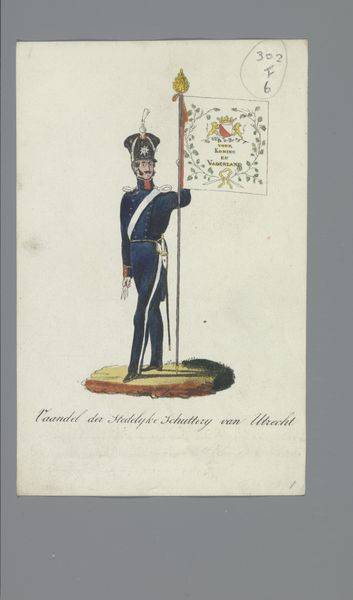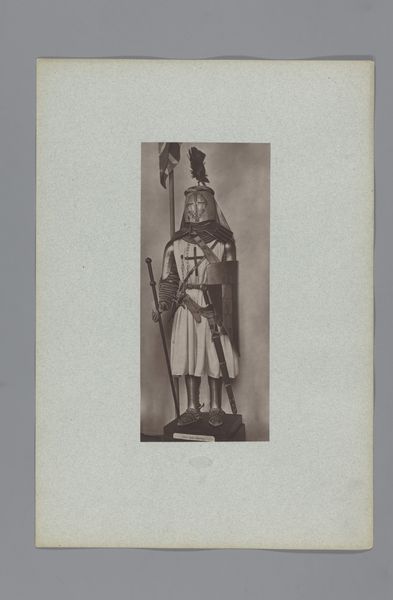
lithograph, print
#
portrait
#
neoclacissism
#
lithograph
# print
#
pencil drawing
#
19th century
Dimensions: 154 mm (height) x 118 mm (width) (bladmaal)
Curator: My eye is drawn to the textures here. The stippling technique creates such varied tonal ranges and a beautiful atmospheric quality. Editor: Yes, the print we are looking at, titled "Grev von Schulenburg", dating from around 1828-1832, certainly employs lithography to great effect. The artist is Peter Christian Schøler. It’s housed here at the SMK, the Statens Museum for Kunst. I see the influence of neoclassicism, especially in its commitment to clear lines and somewhat idealized representation. Curator: Neoclassical portraiture served as a potent marker of social standing, particularly in its revival of classical aesthetics that suggested wisdom, restraint, and virtue, wouldn't you say? And Schulenburg's stern gaze enforces this. Editor: Absolutely. And consider the hat. Its dramatic plume is echoed in the sharp angles of his uniform, further amplifying a sense of martial prowess and authority. It also brings a bit of playfulness to the stoicism. What reads for you on this image? Curator: I find it to be so cold! Those stippled lines mimic the detachment often found in leaders during times of immense change. Also note the uniform adorned with medals that suggest honor but could just as easily denote the spoils of violence and suppression. This piece really emphasizes the burden of legacy and power. I wonder, do viewers find the Count intimidating or admirable? Editor: Well, in terms of the composition, the image sits within a strict geometric border. This confinement actually enhances the expressive potential. It is almost as if he's struggling to break out of those constraints imposed by status and his historical role. There's a clear tension between subject and form that invites introspection. Curator: Perhaps such constraints reflect the rigidity of societal norms at that time. It’s compelling to consider the power dynamics present, even within the act of portraying an individual in this medium and style. The piece serves as an archive of those power structures and codes of presentation, how did class and gender impact social memory. Editor: I've come to see how the contrast between rigidity and minute textures allows it to act almost like a meditation. It definitely balances elements of austerity and surprising detail. Curator: For me it suggests the weight of history and how we negotiate what symbols carry forward.
Comments
No comments
Be the first to comment and join the conversation on the ultimate creative platform.
